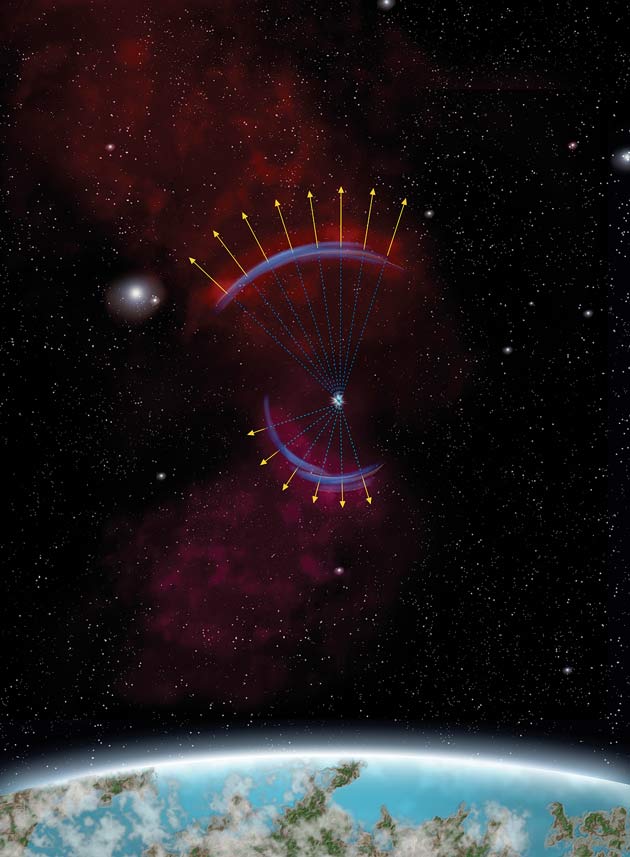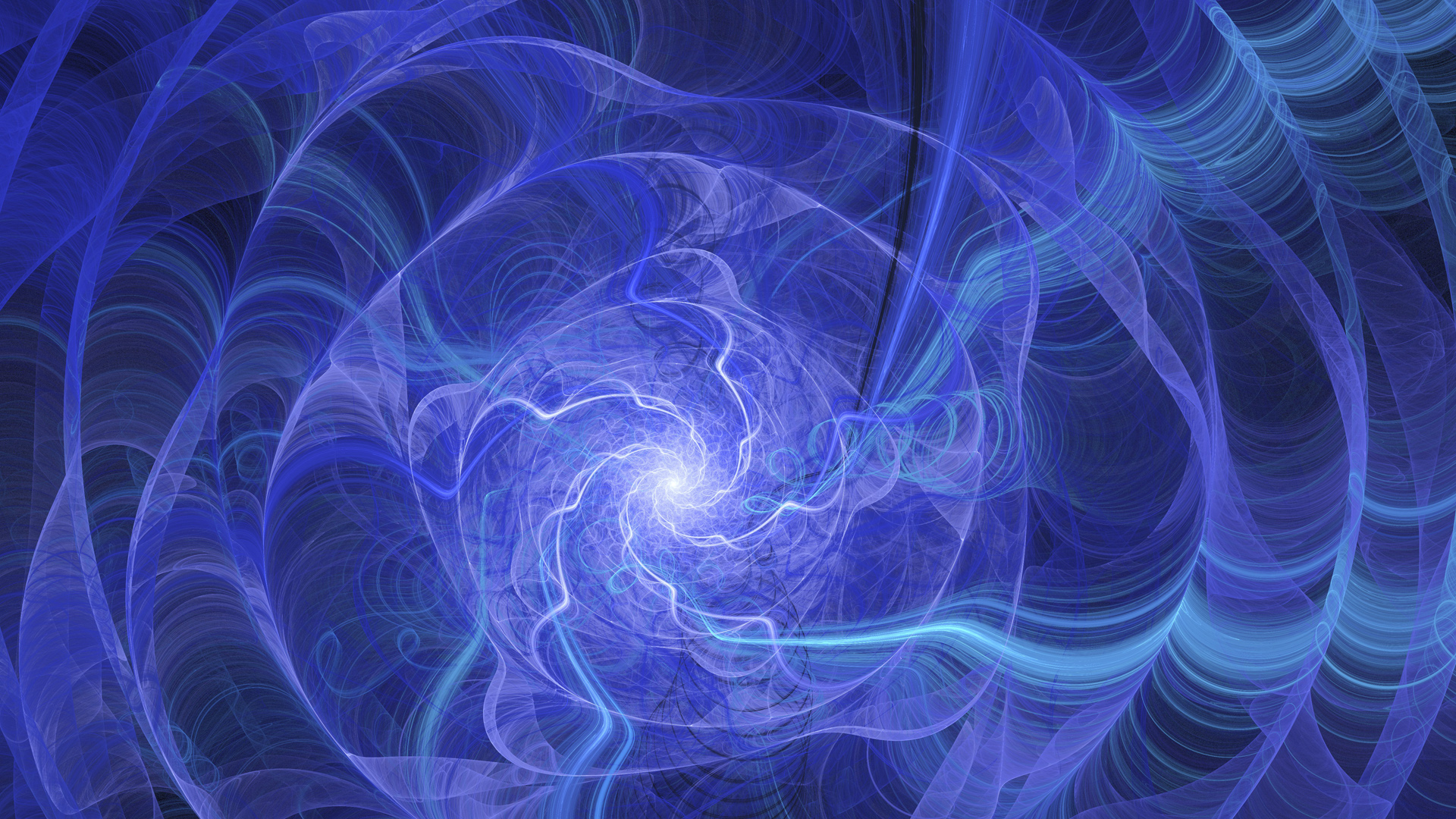Light Echoes Reveal Exploded Stars

Using recently discovered faint light echoes, astronomers have divined when three known supernovas occurred.
The visible echoes are described as being much like sound echoes. They're created when light from the explosion expands outward and reflects off dust and travels toward Earth.
The explosions occurred centuries ago, the astronomers said, with the oldest having erupted about 600 years ago in Earth-time. All three occurred in the Large Magellanic Cloud (LMC), a satellite galaxy to our Milky Way.
The LMC is about 160,000 light-years away.
The discoveries were not intended. Astronomers were surveying the region for signs of dark matter, a mysterious something that pervades the universe but which has never been seen.
In images taken years apart, researchers found concentric, circular-shaped arcs best explained as light moving outward over time and being scattered as it encounters dense pockets of interstellar dust, the researchers report in the Dec. 22 issue of the journal Nature. With each set of arcs, some geometric figuring shows they point back to supernova remnants that had been found previously by the orbiting Chandra X-ray Observatory, which spotted more recently emitted light from nearer to the objects.
"Without the geometry of the light echo, we had no way of knowing just how old these supernovae were," said lead researcher Armin Rest of the National Optical Astronomy Observatory (NOAO). "Some relatively simple mathematics can help us answer one of the most vexing problems that astronomers can ask--exactly how old is this object that we are looking at?"
Breaking space news, the latest updates on rocket launches, skywatching events and more!
It is not the first light echo ever seen. Astronomers have seen one around a well known dead star called Cassiopeia A and, in a remarkable animation, around another object that's not well understood.
But spotting three at once without even trying was unusual. The technique could be applied to study other, more famous supernovae.
"Imagine seeing light from the same explosion first seen by Johannes Kepler some 400 years ago, or the one recorded by Chinese observers in 1006," said Christopher Stubbs of the Harvard-Smithsonian Center for Astrophysics (CfA). "These light echoes give us that possibility."
Stubbs is the co-author of the paper and principal investigator for the SuperMACHO program from which the images came.
The approach could also shed light, quite literally, on space between stars.
Dust and gas between the stars is mostly invisible unless illuminated. The ancient supernova emissions serve as headlight in the fog, lighting up surrounding clouds of matter with its strobe-like flash, the astronomers said.

Space.com is the premier source of space exploration, innovation and astronomy news, chronicling (and celebrating) humanity's ongoing expansion across the final frontier. Originally founded in 1999, Space.com is, and always has been, the passion of writers and editors who are space fans and also trained journalists. Our current news team consists of Editor-in-Chief Tariq Malik; Editor Hanneke Weitering, Senior Space Writer Mike Wall; Senior Writer Meghan Bartels; Senior Writer Chelsea Gohd, Senior Writer Tereza Pultarova and Staff Writer Alexander Cox, focusing on e-commerce. Senior Producer Steve Spaleta oversees our space videos, with Diana Whitcroft as our Social Media Editor.
